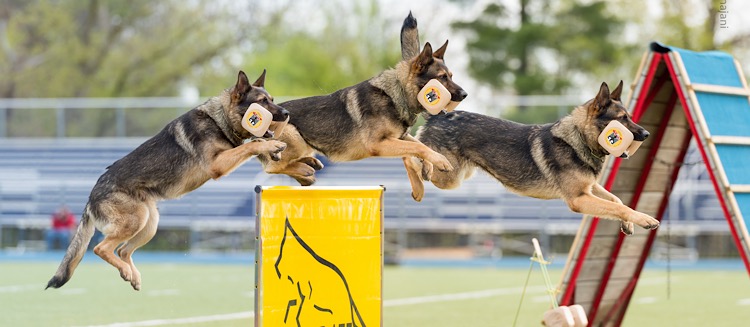In an increasingly fast-paced age of technology, the use and inquiry of the Electronic Remote Training Collar are on the rise. Many training systems, with flashy names and fancy catchphrases, are becoming more and more popular with performance training and pet companion training. Over the past 20 years of coaching people to high-level performance work, competing myself, doing hundreds and hundreds of seminars and workshops around the world, and working with thousands of people with their companion dogs, I rarely suggest using an Electronic Remote Collar. Many times I feel like a hypocrite, because I use one, primarily with my performance dogs. I do not use one because they are high drive. I do not use one because they are disobedient. I use one because I prefer not to use a leash in training. A leash is cumbersome for me. I also like to have contact with my dogs. I also choose to use all quadrants of the contingency learning square. What does that mean? That means I use pressure, or in other words, corrections. But more than corrections, I use it for contact. I prefer to not limit my training to one or two pieces of the puzzle. To give the dog the clearest line of communication possible. To use ALL the tools. That is a whole different topic.
I often hear the question, "How do you use a Remote Collar?" The answer is simple, the same way you would use a leash. But it is amazing how many people do not know how to use a leash and a collar properly. Or how corrections or pressure even works. In my short time of 20 years in this profession, I see more people struggle with reward-based training. Understanding the technology of behavior training. So in my mind, it seems more productive to help people understand reward-based training before giving then a tool to make pressure or corrections.
The biggest problems people face is using proper timing, reinforcement, and motivation. Once you master these then you can consider using corrections and or pressure. If your timing is bad using rewards, it will also be bad using an electronic collar.
I decided to make the pros and cons of the use of an electronic collar. Before you even consider using one, you must ask yourself do you intend to use pressure? Or do you only use one piece of the contingency square in your training?
Here is my list of pros and cons. But what you will find is, it is not the collar that makes these happens. The collar is just a vehicle.
pros:
1) It can make reliability in your training
2) It is less cumbersome than a leash in some cases
3) It can remove the trainer from the picture
4) It can be used at a distance
5) It can be used to increase speed for the desired behavior
6) It can deliver a correction in the form of something that the dog perceives as a correction when a handler is not capable
7) In some cases, if used properly can increase drive
8) In some cases, if used properly it can suppress drive
9) In some cases, if used properly it can be used for avoidance
10) I can be used as a clear line of contact and communication.
Here are some cons.
1) It can make behavior slower
2) It can frighten the dog
3) It can damage the integrity of behavior
4) The dog may become collar smart if not used properly
5) It can suppress drive
6) The collar itself must be of good quality and working consistently. Good collars are expensive.
7) It may confuse your dog
8) It does not take the place of a good relationship
9) it may be more cumbersome than a leash
10) You still must have good timing to use one and understand applied behavior and learning theory
This is just a short list off the top of my head. The Electronic Collar can be a great tool for training. But it is not a short cut. It does not have magic powers. It does not take the place of good timing and reinforcement. And although many companies have branded their training philosophy around the use of it, it does not take the place of hard work.
For more information on the use of Electronic Collars, please visit www.davekroyer.com for instructional videos on conditioning your dog to the Electronic Collar.








